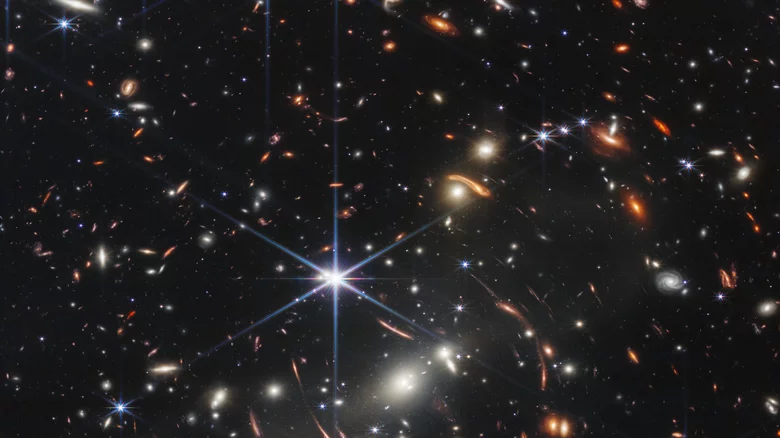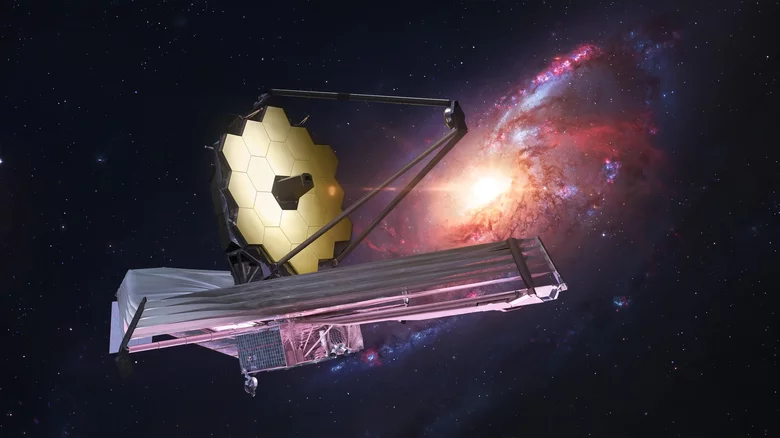The long-awaited day has arrived when the first scientific photograph of the universe, taken with the space telescope designed by James Webb, has been published. According to NASA, the image is the sharpest and deepest ever observed of the distant Universe in the infrared, and shows the bright galaxies of the galaxy cluster SMACS 0723. A galaxy cluster is a huge group of hundreds or thousands of galaxies and this La galaxy was observed in a relatively faint place in the sky. The image appears bright and complete thanks to the extremely sensitive Webb instruments, which can pick up the very faint light emitted by these extremely distant objects.
The image covers a tiny area of the sky, comparable to a small 1mm grain of sand, but shows a richness and depth that is present even in the seeming blackness of space. The image also shows an effect called gravitational lensing, in which a galaxy cluster’s gravity causes light coming behind it to bend, allowing researchers to see even more distant galaxies that would otherwise be invisible. This image has been dubbed “Webb’s First Deep Field” and shows what the new telescope is capable of.

Launched in December 2021, the space telescope, in collaboration between NASA, ESA and CSA, observes the universe in infrared from an orbit around the Sun. As the telescope traveled through space, it had to deploy its equipment, which folded up to fit inside the launch vehicle. Its 6.5-meter mirror, made up of 18 hexagonal segments, had to be carefully aligned, adjusting each segment with nanometer precision. Then, with the mirrors aligned, each of the four Webb instruments had to be cooled to operating temperature and then calibrated and tested. As of July 11, 2022, the telescope is fully ready for scientific work.
The good news for scientists is that Webb’s work is as good or better than expected, even though the telescope suffered minor damage from a micrometeorite in June. “Scientists are thrilled that Webb is alive and strong as we hoped, and that he has survived all dangers to become our golden eye in space,” said scientist John Mather in an emailed statement. “What happened after the Big Bang? How did the expanding universe cool and form black holes, galaxies, stars, planets, and people? Astronomers analyze the data first with images and then with imagination and calculations. But there is something we could never have imagined and I will be as amazed as you are when we find it.”
DEEPCOOL literally upgraded its liquid cooling lineup and received the LS label. In this review, the LS520 model. Of the key changes, we can note an interesting pump and…
If your visit to Sochi is limited to one day, don’t be too upset. There is a term “Slow Travel”, implying a tourist’s acquaintance with major attractions when…
The Great White Shark: At the mere mention of this ferocious predator, most people’s blood runs cold in their veins. And swimming next to the main predator of the ocean is perceived by people as something completely …
Obsolete electronic products, more commonly known as e-waste, are a growing problem around the world. The statistics showing the amount of garbage produced each year are staggering…
The small town of Sysert, a suburb of Yekaterinburg. In the center there is a set of workshops from the old forge. For a long time it was abandoned. Trying to enter the territory, he drove …
These headphones are easy to carry as the case doesn’t take much space in your pocket. On the ears, the earphones sit firmly and quite comfortably, plus they’re quite heavy. The sound is not disturbing…
Source: IXBT










